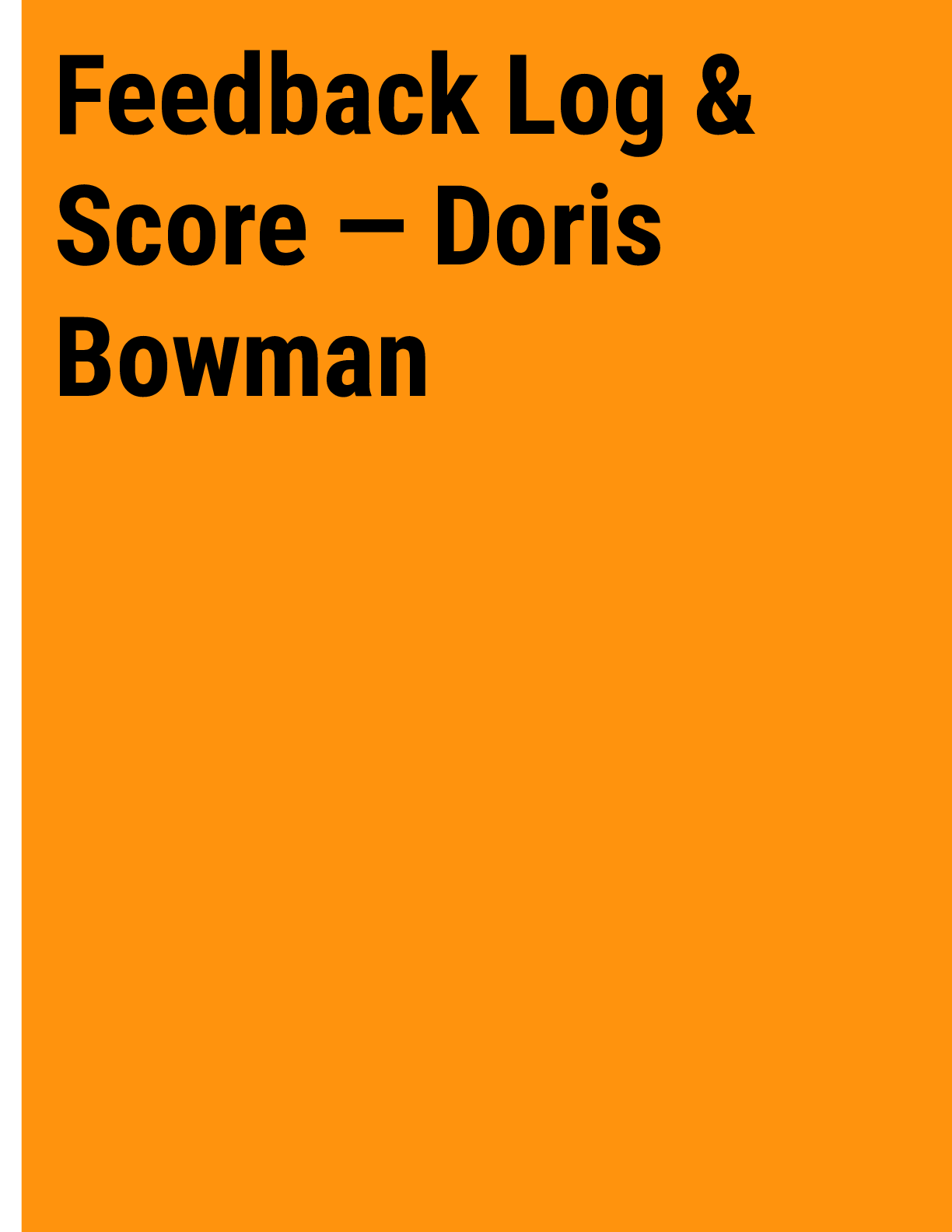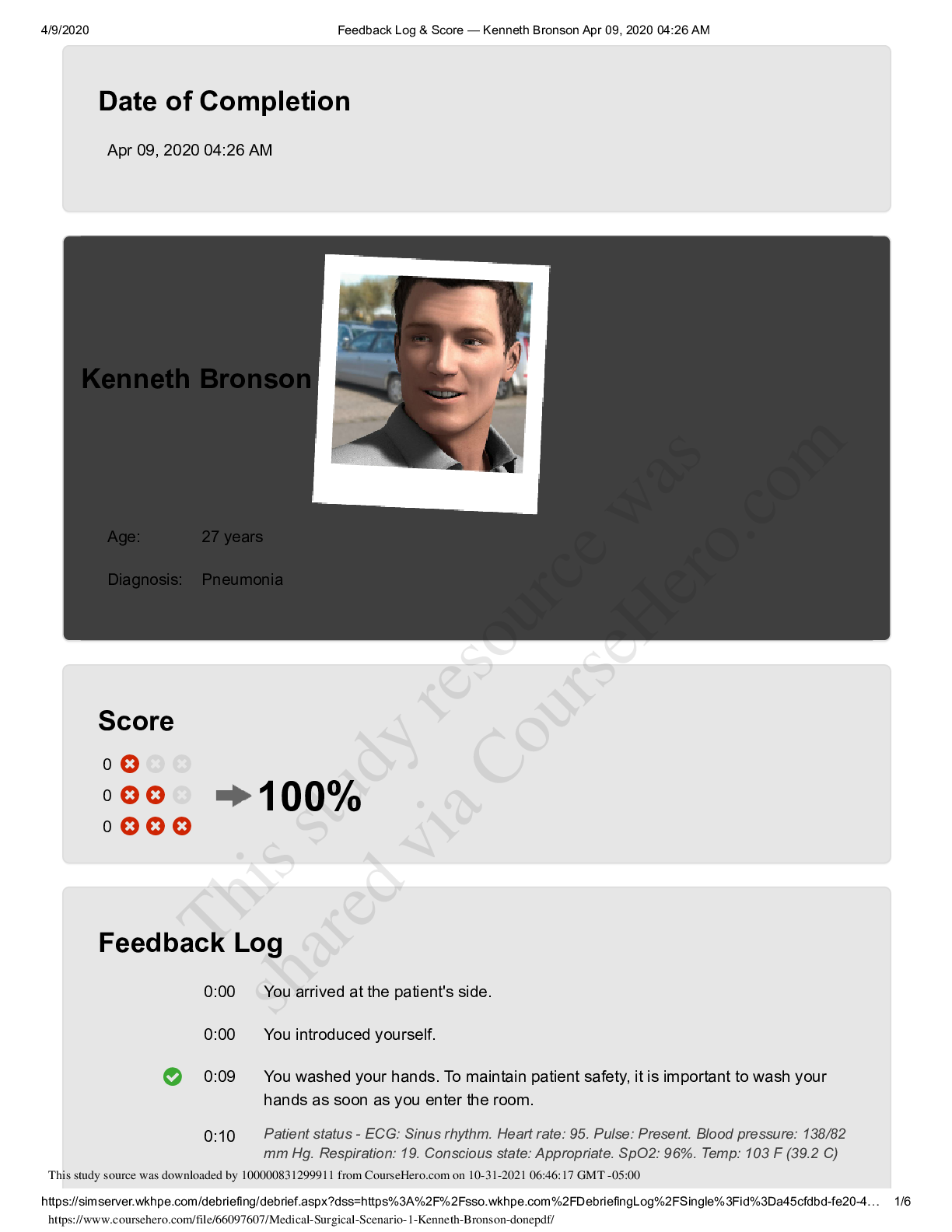NURS 200Feedback Log & Score Sara Lin./Cmplete solution /; Rated A
Document Content and Description Below
0:00 You reviewed the MAR. 0:00 You reviewed the orders. 0:00 You reviewed the intake and output. 0:10 Patient status - ECG: Sinus rhythm. Heart rate: 99. Pulse: Present. Blood pressure: 136/81 mm... Hg. Respiration: 21. Conscious state: Appropriate. SpO2: 97%. Temp: 99 F (37.2 C) 0:12 You introduced yourself. This was reasonable. 0:22 You washed your hands. To maintain patient safety, it is important to wash your hands as soon as you enter the room. 1:10 Patient status - ECG: Sinus rhythm. Heart rate: 99. Pulse: Present. Blood pressure: 136/81 mm Hg. Respiration: 21. Conscious state: Appropriate. SpO2: 98%. Temp: 99 F (37.1 C) 1:42 You identified the patient. To maintain patient safety, it is important that you quickly identify the patient. 1:51 You asked the patient how she felt. (In pain) She replied: 'I just want to go home. The pain makes it hard to do deep breathing and cough, though.' 2:10 Patient status - ECG: Sinus rhythm. Heart rate: 99. Pulse: Present. Blood pressure: 135/81 mm Hg. Respiration: 21. Conscious state: Appropriate. SpO2: 98%. Temp: 99 F (37.1 C) 2:11 You asked the patient: Where does it hurt? (In pain) She replied: 'Just my belly, nowhere else really.' 2:19 You asked the patient if she could describe her pain. (In pain) She replied: 'I feel a sharp pain on the side, and my belly hurts and kind of throbs.' 2:29 You asked: How would you rate your pain? (In pain) She replied: 'It's pretty bad; I'd give it a 6. ' 2:40 You asked if the patient was <Allergy>allergic<> to anything. (In pain) She replied: 'No, I am not allergic to anything.' 2:48 You asked the patient if she had taken her medication, if any. (In pain) She replied: 'No, I don't take any medication.' 3:10 Patient status - ECG: Sinus rhythm. Heart rate: 99. Pulse: Present. Blood pressure: 138/83 mm Hg. Respiration: 21. Conscious state: Appropriate. SpO2: 98%. Temp: 99 F (37 C) 3:33 You compared the medication label with MAR. This was reasonable. 3:46 A 5-mg dose of oxycodone was given orally. It is important to use the basic rights of medication administration to ensure proper drug therapy. This was indicated by order. 4:00 You gave the patient a sip of water. 4:10 Patient status - ECG: Sinus rhythm. Heart rate: 99. Pulse: Present. Blood pressure: 138/82 mm Hg. Respiration: 21. Conscious state: Appropriate. SpO2: 98%. Temp: 99 F (37 C) 4:28 A 500-mg dose of levofloxacin was given orally. This was indicated by order. 4:50 You compared the medication label with MAR. This was reasonable. 4:59 A 325-mg dose of acetaminophen was given orally. This was reasonable. 5:10 Patient status - ECG: Sinus rhythm. Heart rate: 99. Pulse: Present. Blood pressure: 136/81 mm Hg. Respiration: 21. Conscious state: Appropriate. SpO2: 98%. Temp: 99 F (37 C) 5:12 You gave the patient a sip of water. 5:46 You examined the patient's abdomen and pelvis. There is a dressing covering the skin lesion on the abdomen. There is normal elasticity of the skin. Her skin is cool, and she is very sweaty. There is nothing else to find on examination of the abdomen and pelvis. 6:10 Patient status - ECG: Sinus rhythm. Heart rate: 99. Pulse: Present. Blood pressure: 137/82 mm Hg. Respiration: 21. Conscious state: Appropriate. SpO2: 98%. Temp: 99 F (37 C) 6:28 You listened to the abdomen of the patient. Normal bowel sounds were heard. 6:46 You attached the <Pulseoximeter>pulse oximeter.<> It is a good idea to monitor the saturation and pulse here. This will allow you to reassess the patient continuously. 6:56 You checked the <Temperature>temperature<> at the ear. The temperature was 99 F (37 C). 7:06 You looked for normal breathing. She is breathing at 21 breaths per minute. The chest is moving equally. 7:10 Patient status - ECG: Sinus rhythm. Heart rate: 99. Pulse: Present. Blood pressure: 137/82 mm Hg. Respiration: 21. Conscious state: Appropriate. SpO2: 98%. Temp: 99 F (37 C) 7:28 You checked the radial pulse. The pulse is strong, 100 per minute, and regular. It is correct to assess the patient's vital signs. 8:02 You measured the <Bloodpressure>blood pressure<> at 136/82 mm Hg. It is appropriate to monitor the patient by measuring the blood pressure. 8:10 Patient status - ECG: Sinus rhythm. Heart rate: 99. Pulse: Present. Blood pressure: 139/83 mm Hg. Respiration: 21. Conscious state: Appropriate. SpO2: 98%. Temp: 99 F (37 C) 8:33 You educated the patient about activities, safety, and fall risk. 9:05 You educated the patient about wound care. This was reasonable. 9:10 Patient status - ECG: Sinus rhythm. Heart rate: 99. Pulse: Present. Blood pressure: 137/82 mm Hg. Respiration: 21. Conscious state: Appropriate. SpO2: 98%. Temp: 99 F (37 C) 9:40 You educated the patient about use of incentive spirometer. This was indicated by order. 10:10 Patient status - ECG: Sinus rhythm. Heart rate: 99. Pulse: Present. Blood pressure: 139/83 mm Hg. Respiration: 21. Conscious state: Appropriate. SpO2: 98%. Temp: 99 F (37 C) 10:13 You educated the patient about positioning. 10:37 You educated the patient about medication. 11:10 Patient status - ECG: Sinus rhythm. Heart rate: 99. Pulse: Present. Blood pressure: 138/83 mm Hg. Respiration: 21. Conscious state: Appropriate. SpO2: 98%. Temp: 99 F (37 C) 11:17 You educated the patient about diet. 12:01 The patient used an incentive spirometer. This was indicated by order. 12:10 Patient status - ECG: Sinus rhythm. Heart rate: 98. Pulse: Present. Blood pressure: 134/80 mm Hg. Respiration: 21. Conscious state: Appropriate. SpO2: 98%. Temp: 99 F (37 C) 13:10 Patient status - ECG: Sinus rhythm. Heart rate: 98. Pulse: Present. Blood pressure: 138/82 mm Hg. Respiration: 21. Conscious state: Appropriate. SpO2: 98%. Temp: 99 F (37 C) 13:27 You asked the patient if she felt better. (In pain) She replied: 'Yes, a little bit.' 13:38 A patient handoff was performed. This case presents a female who had an emergency appendectomy 2 days ago for a ruptured appendix. She is scheduled for discharge this afternoon with an order for oral antibiotics and oral pain medications. The students are expected to do a focused pain assessment and decide, in collaboration with the patient, the most appropriate pain intervention at this time. Students are expected to administer medications using safe medication administration techniques. They are also expected to provide patient education for managing pain at home after discharge. Pain management is an important aspect of postoperative care. Considered the fifth vital sign, pain is defined as the sensory and emotional experience associated with actual or potential tissue damage. Pain, therefore, includes not only the perception of an uncomfortable stimulus but also the response to that perception. Explain to the patient how pain medications work together with other pain management therapies to provide relief. You got 100% [Show More]
Last updated: 1 year ago
Preview 1 out of 4 pages
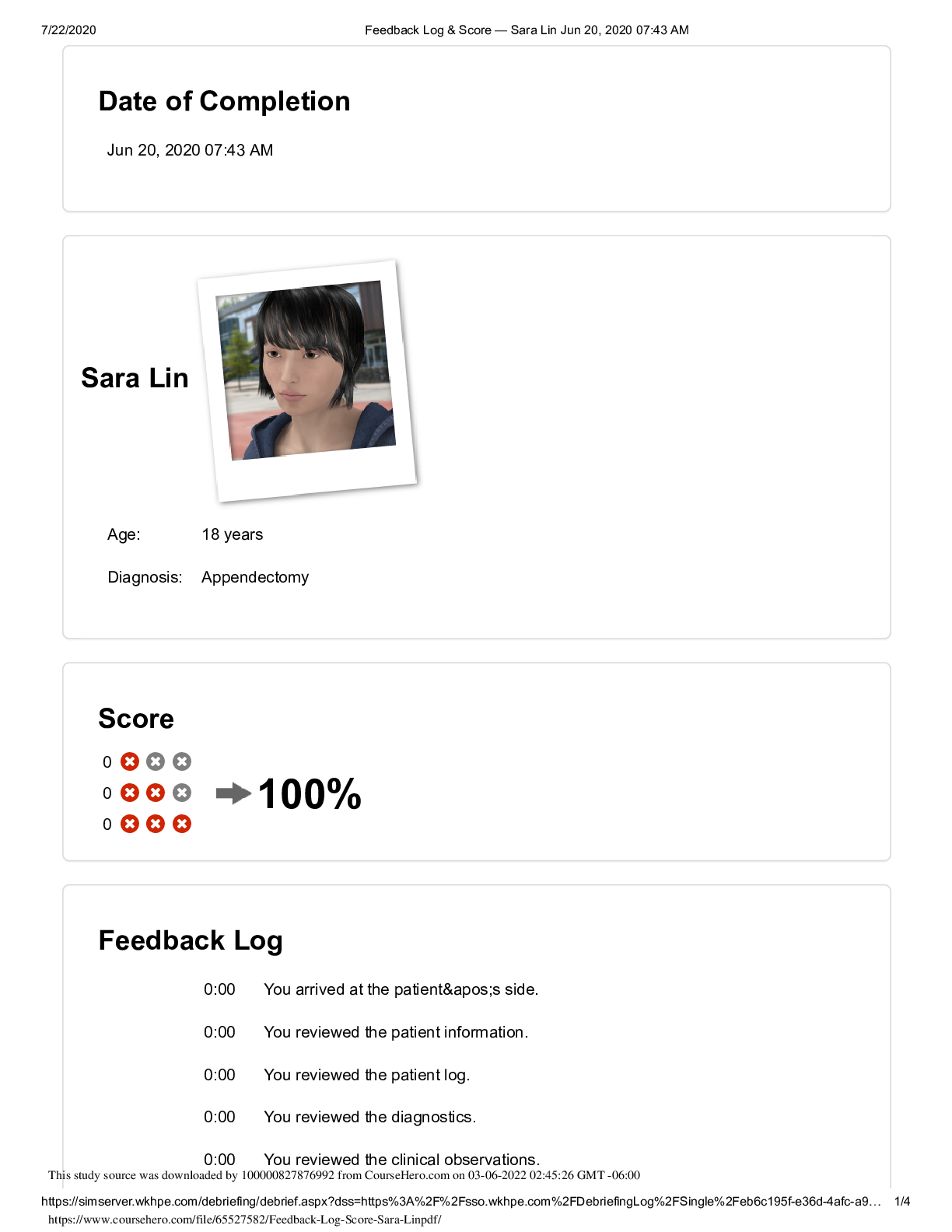
Reviews( 0 )
Document information
Connected school, study & course
About the document
Uploaded On
Aug 02, 2021
Number of pages
4
Written in
Additional information
This document has been written for:
Uploaded
Aug 02, 2021
Downloads
0
Views
41


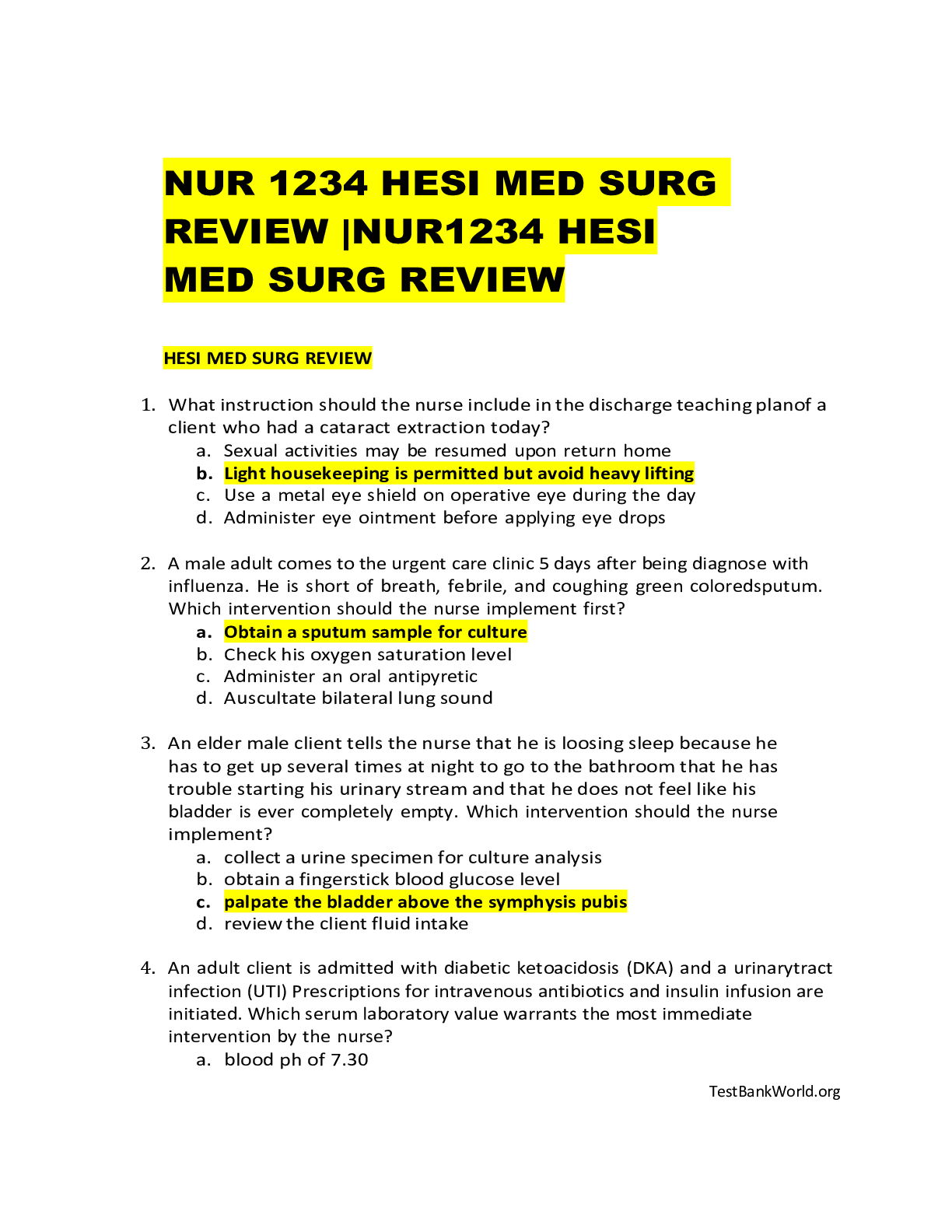
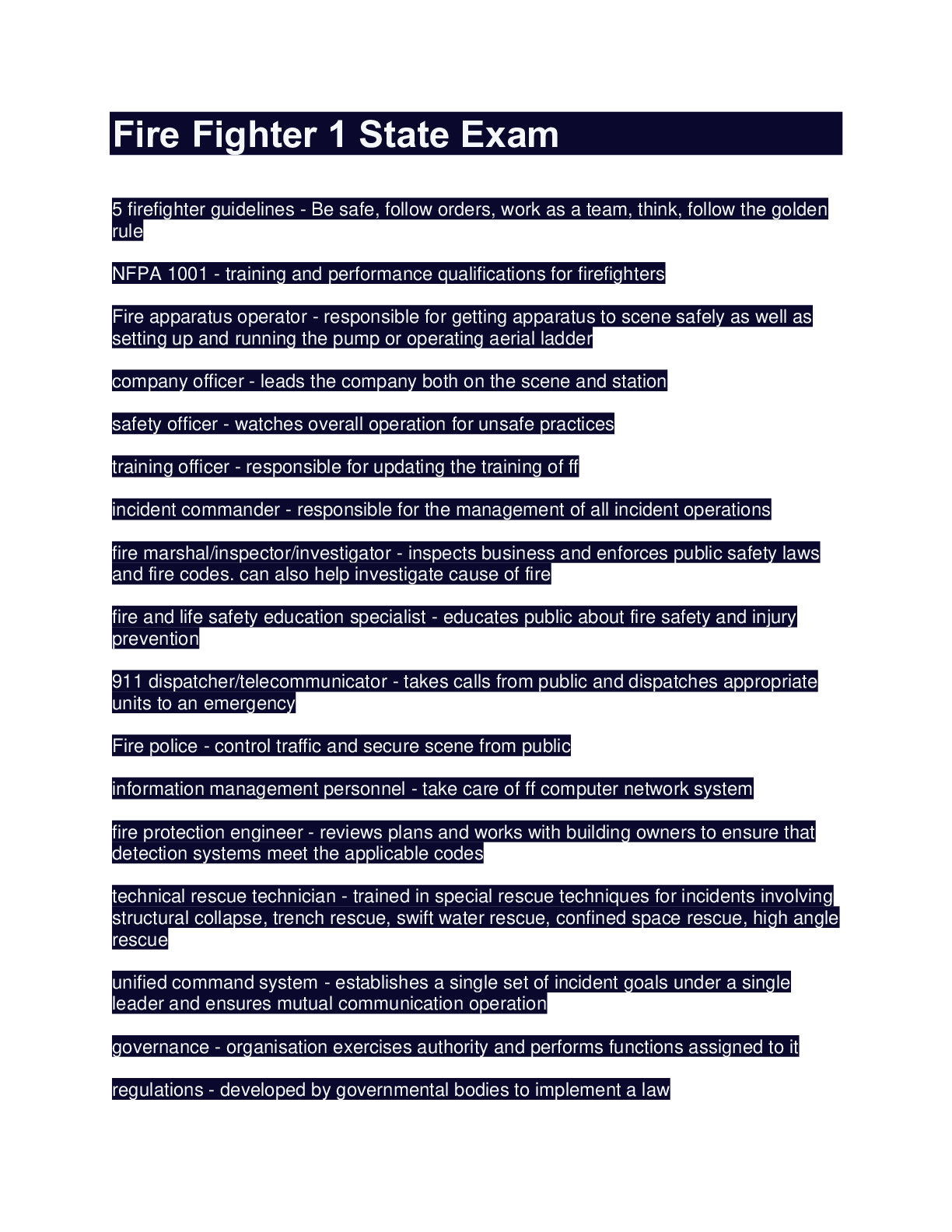
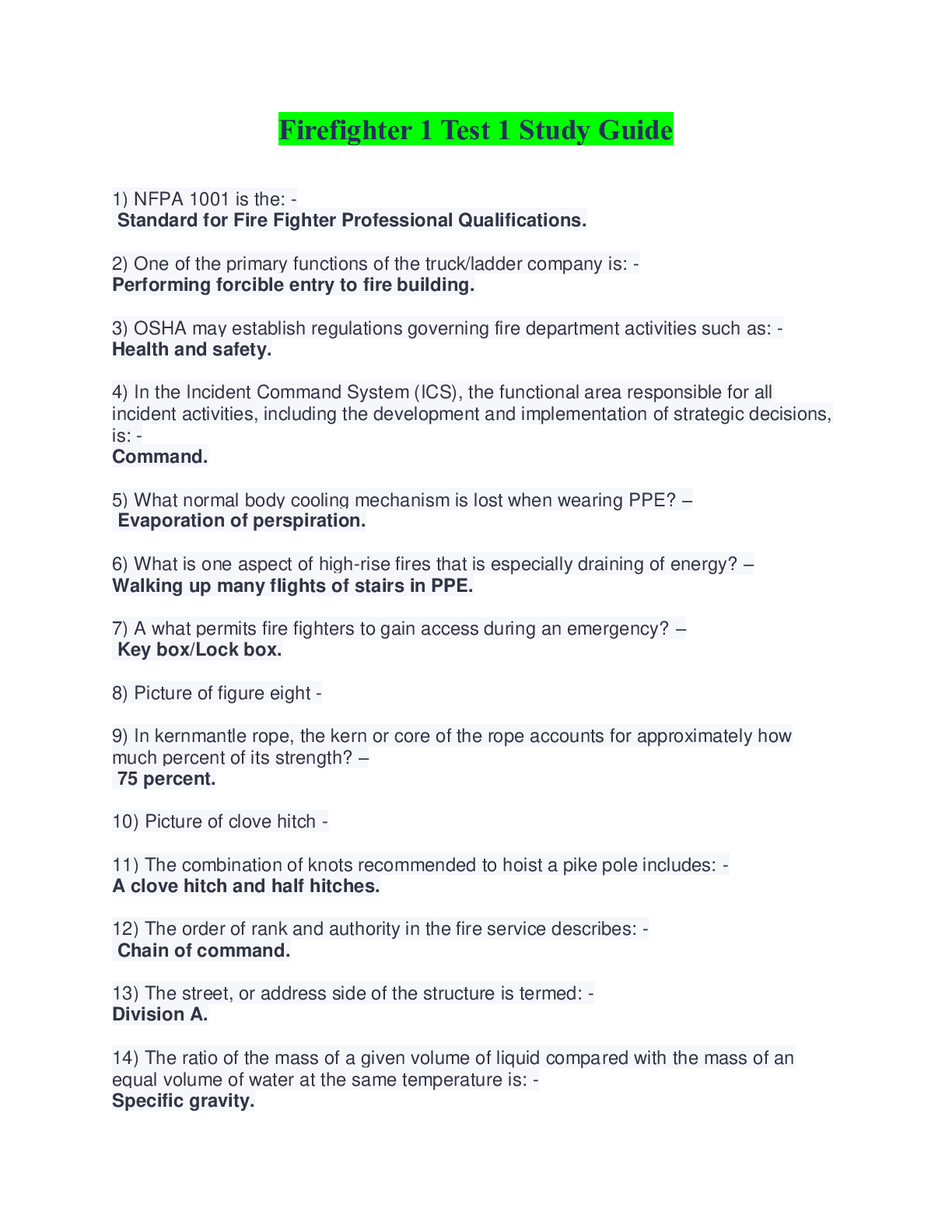
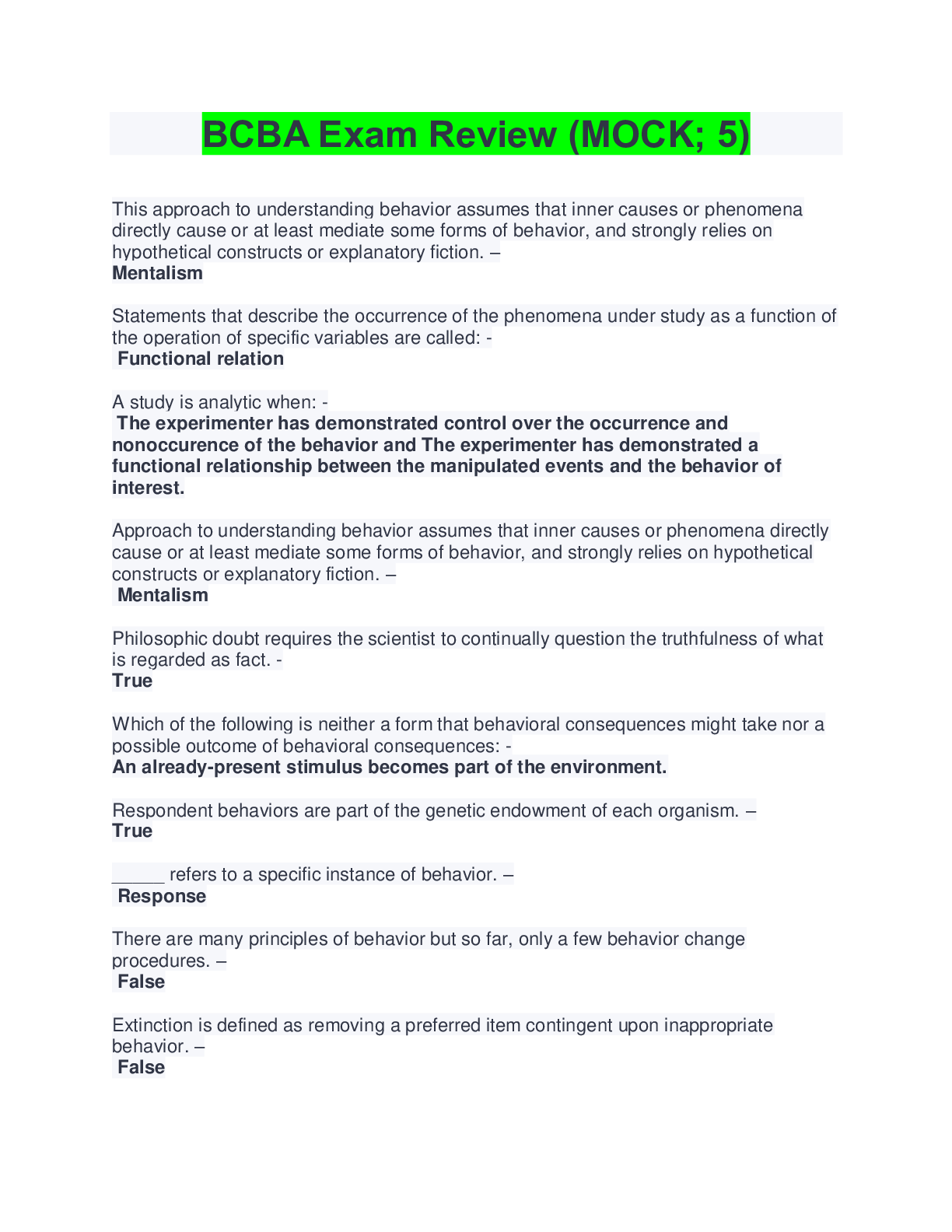

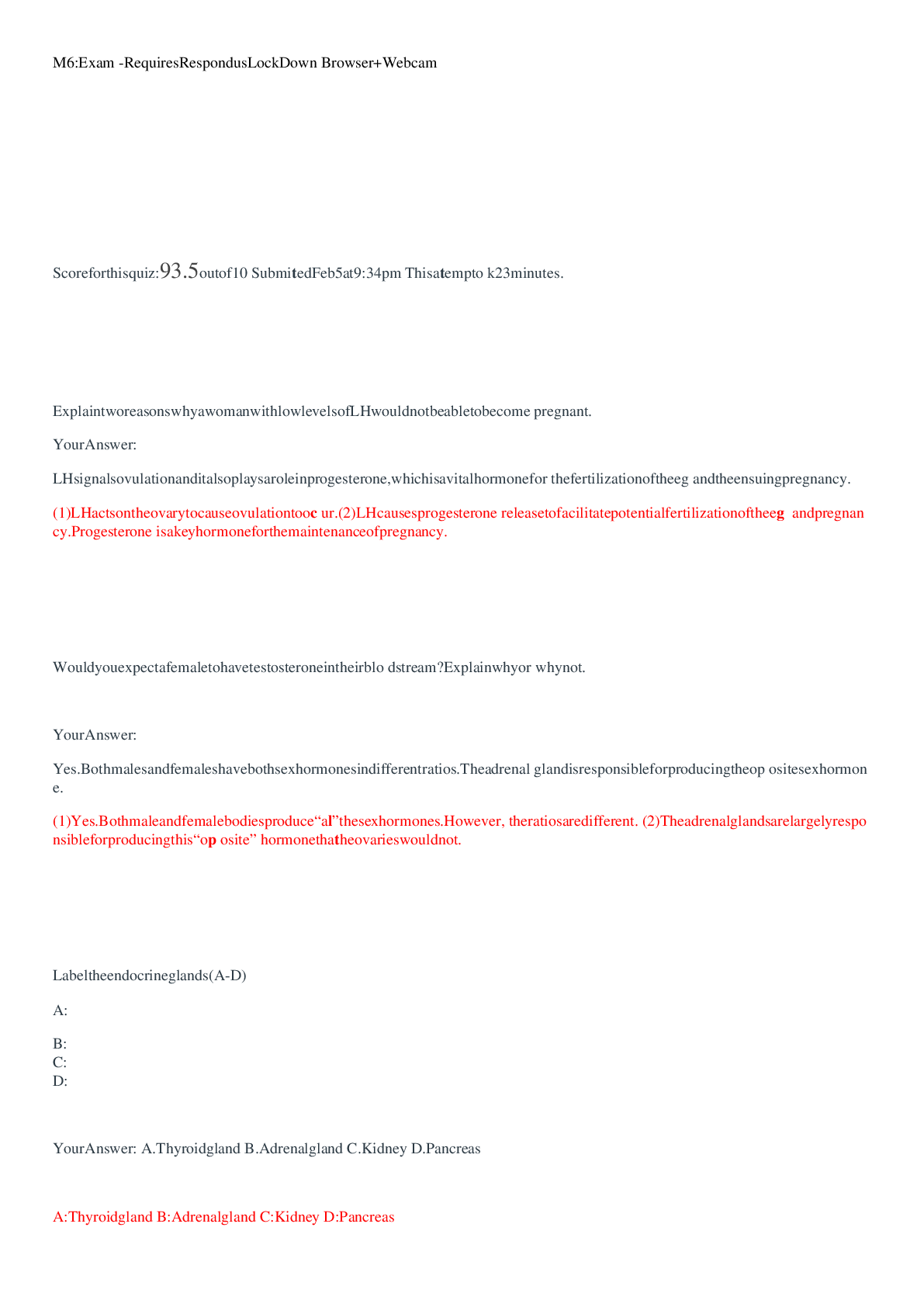
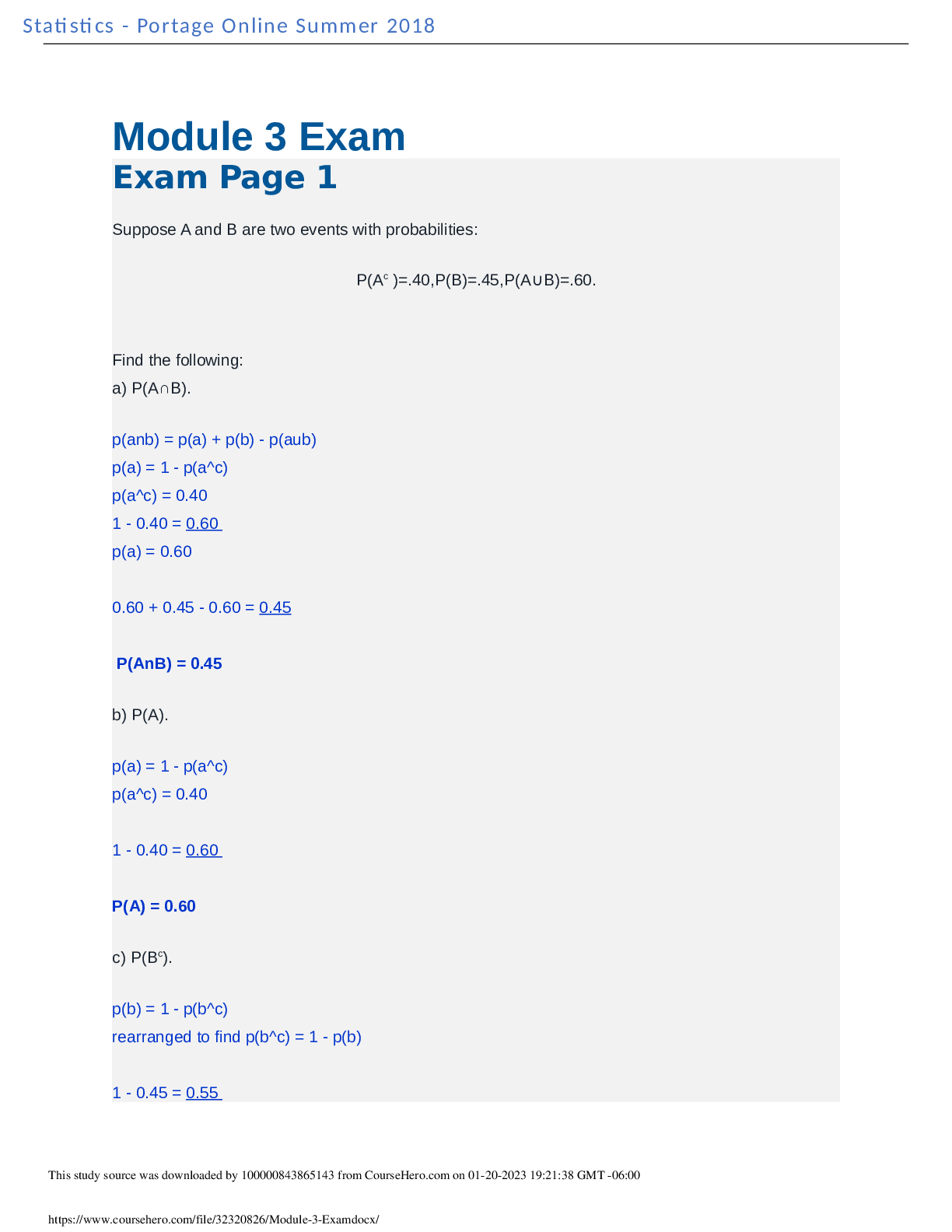
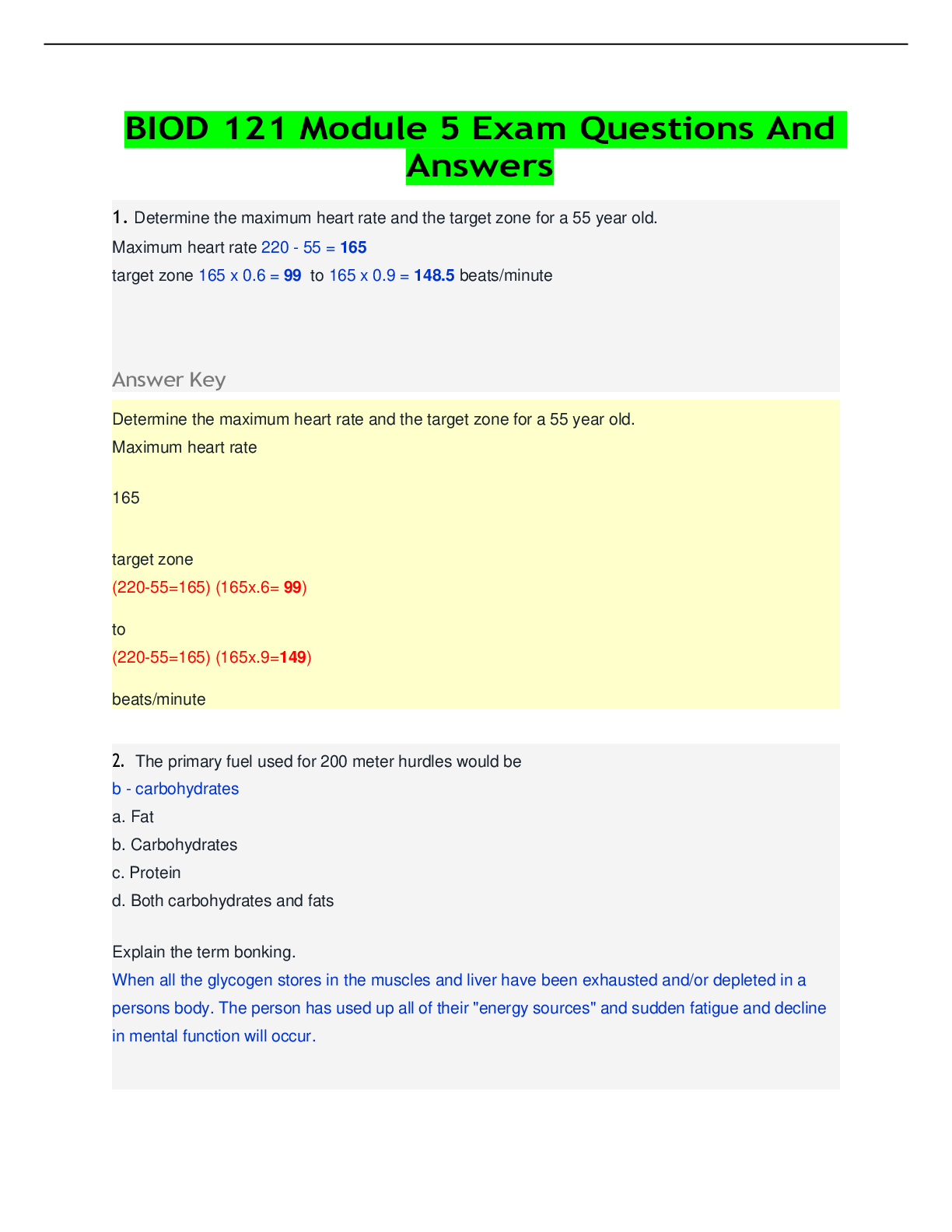
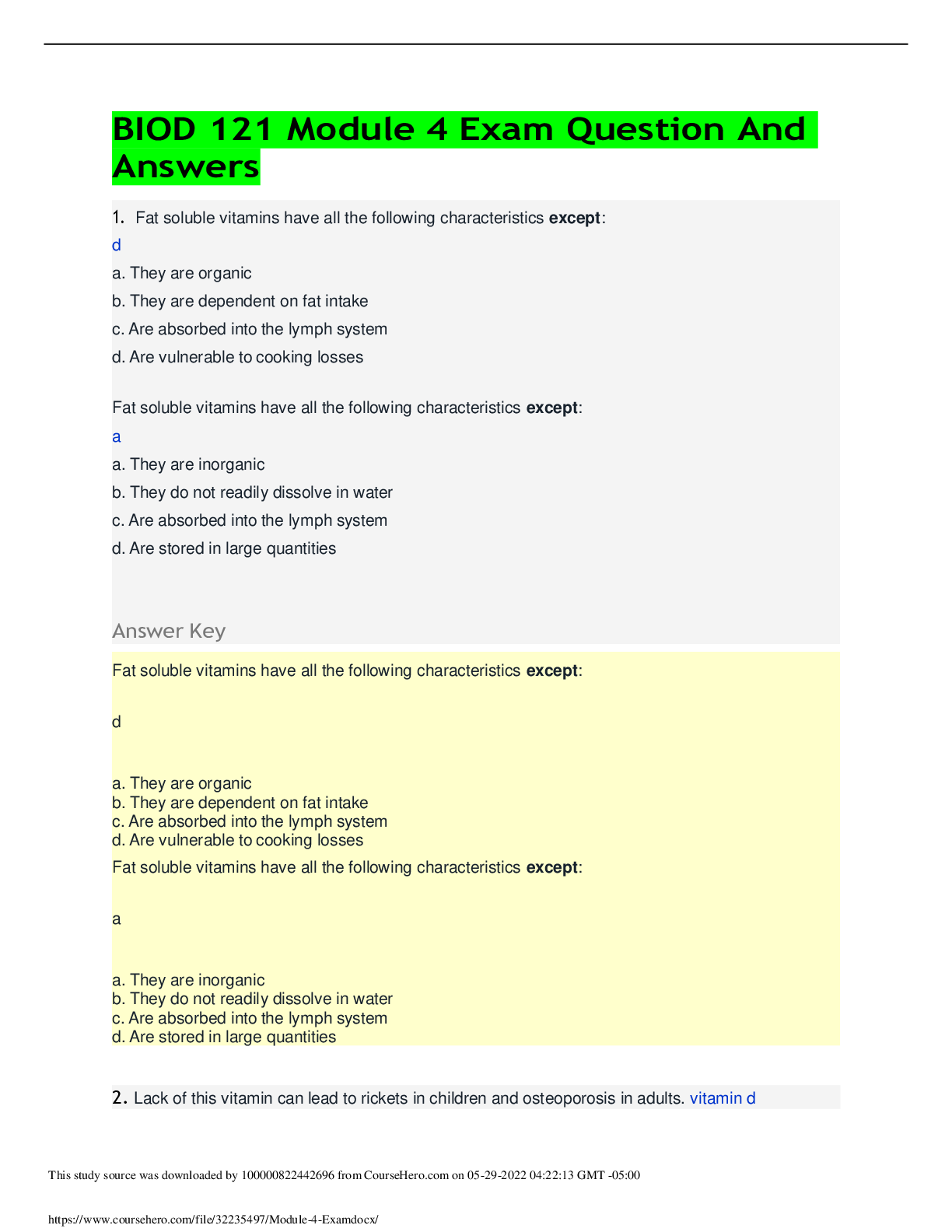
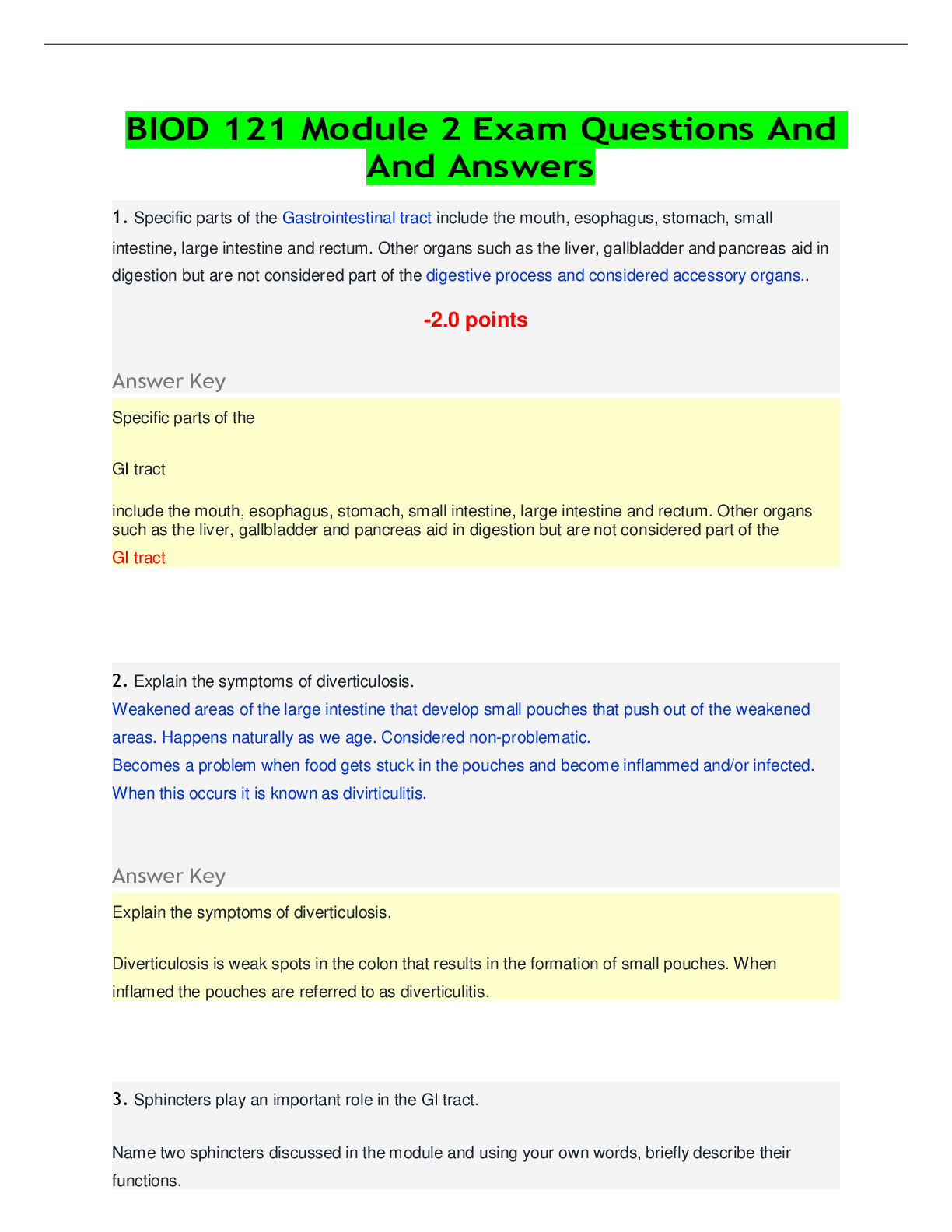
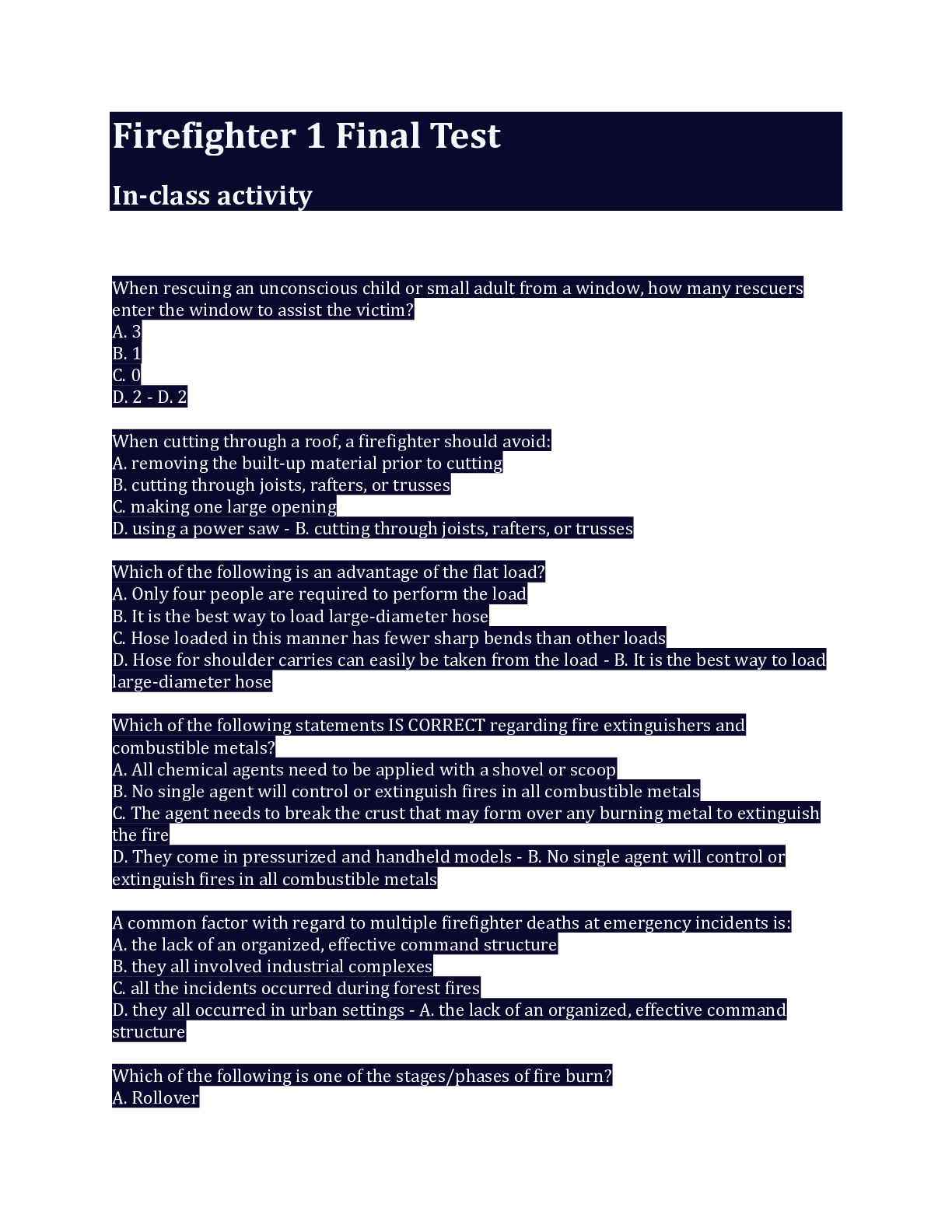
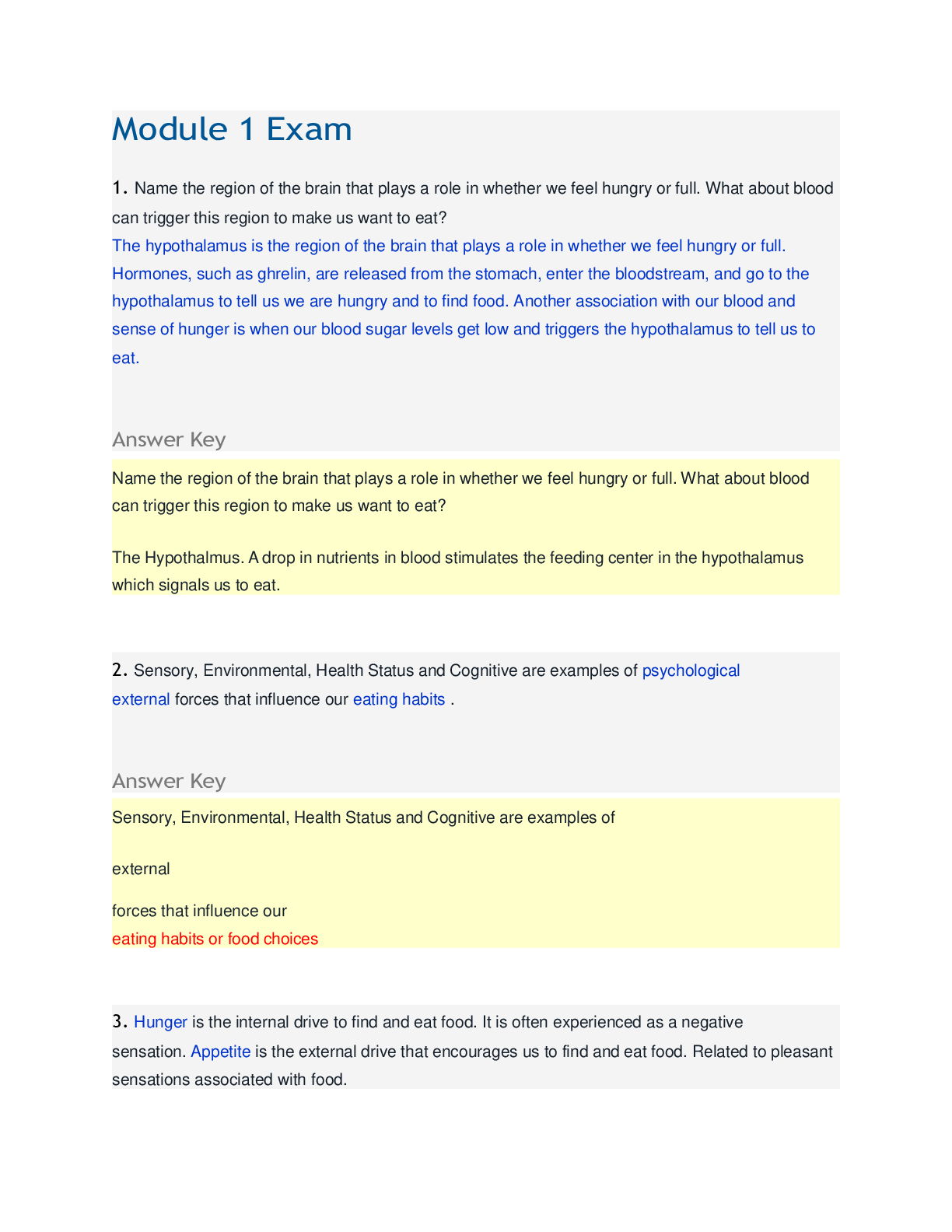
 (1).png)
 (1).png)
 (1).png)
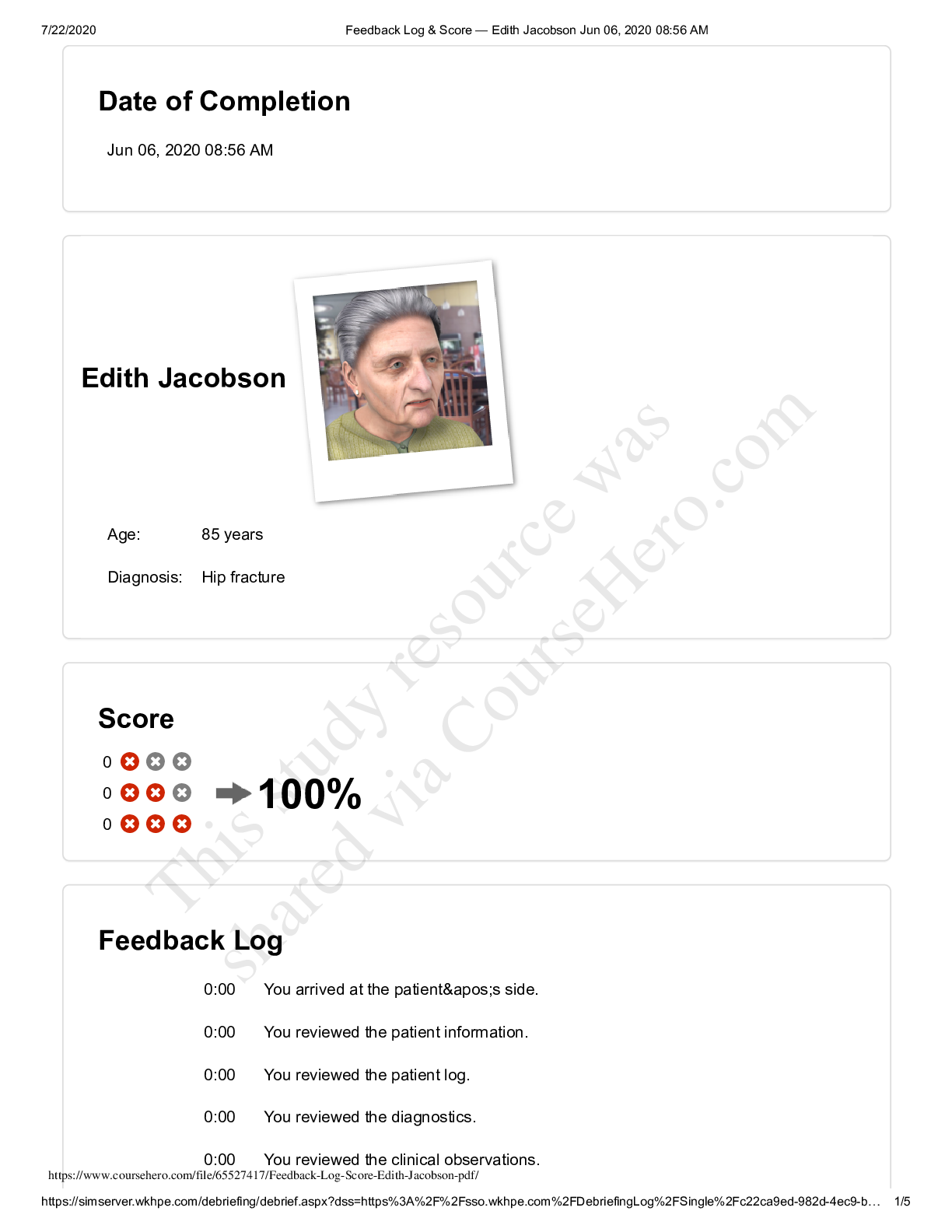
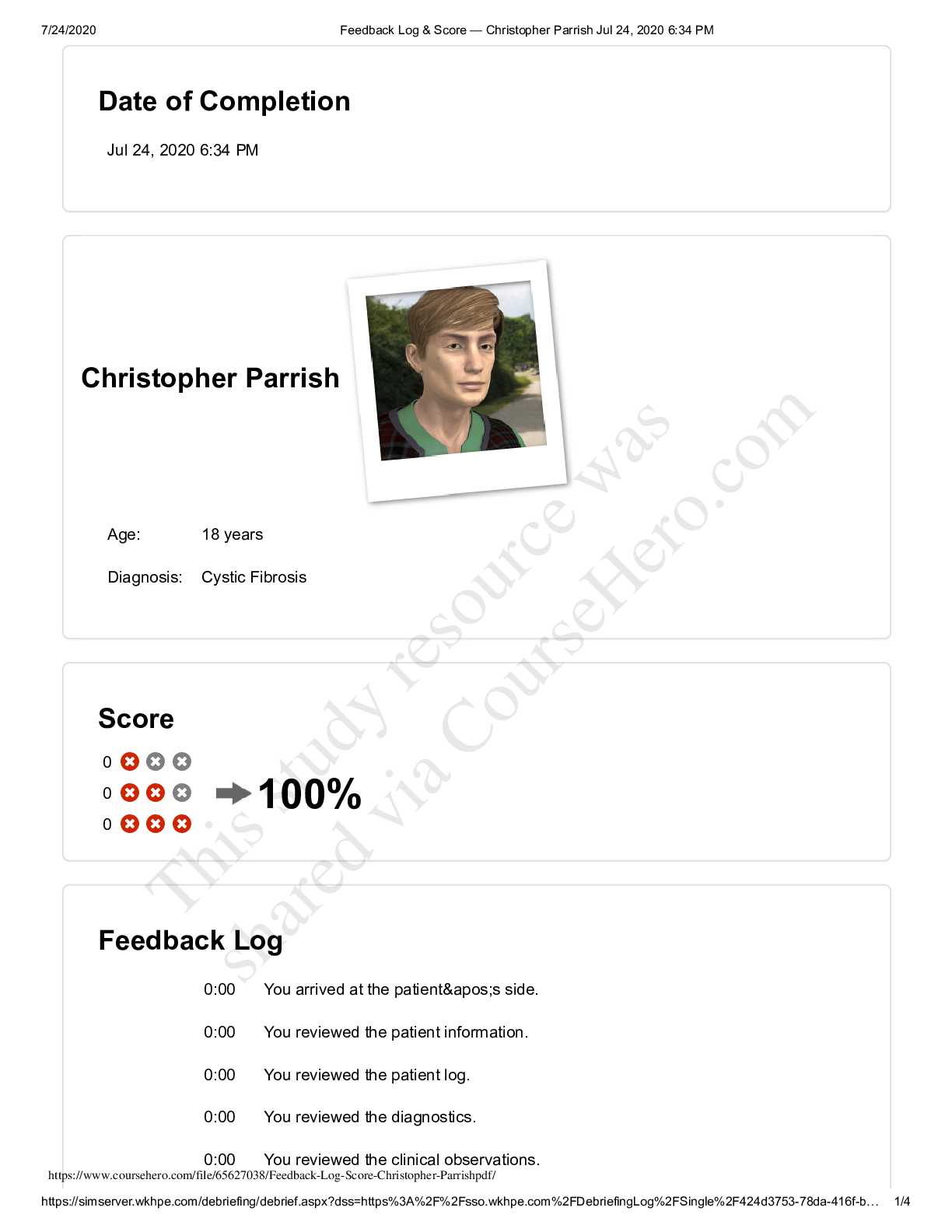
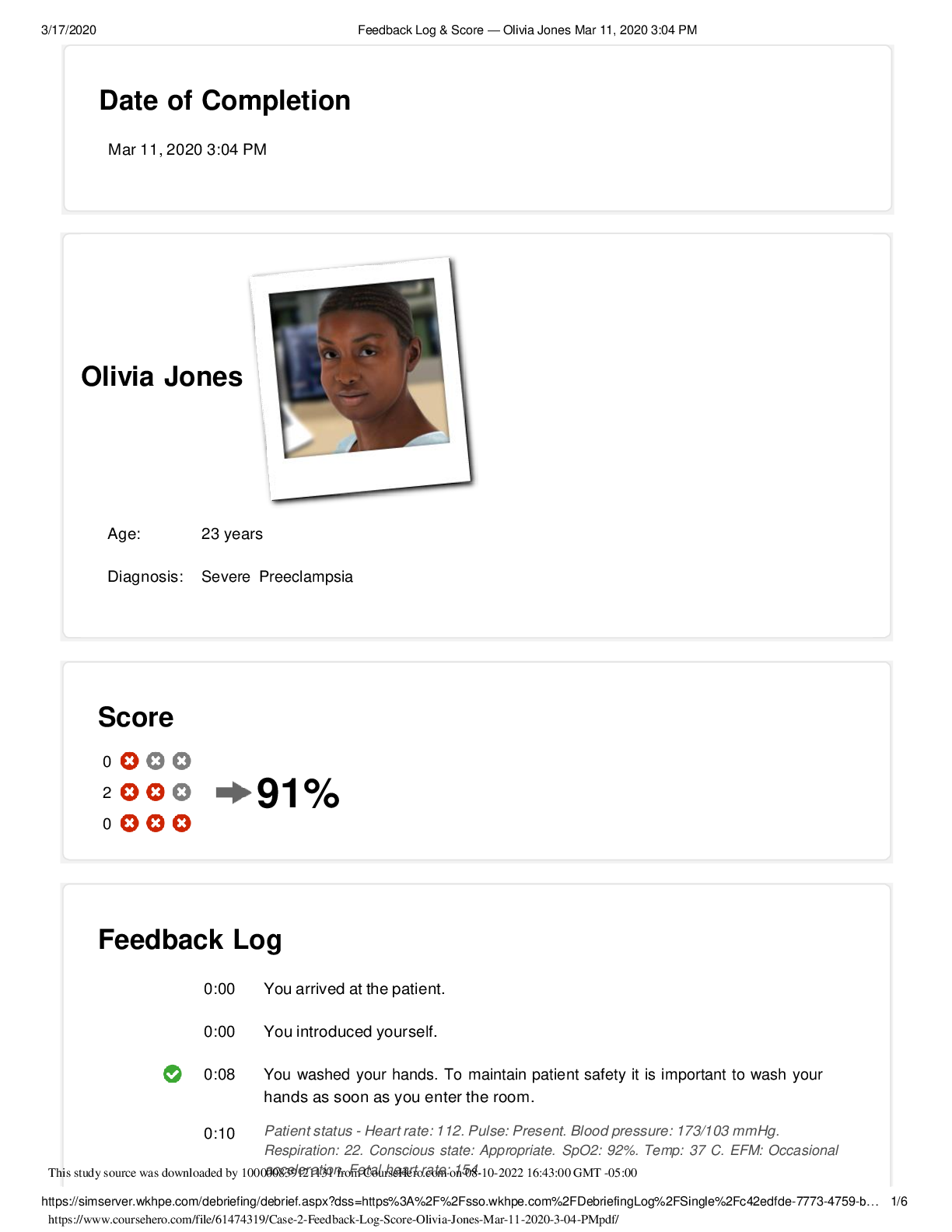
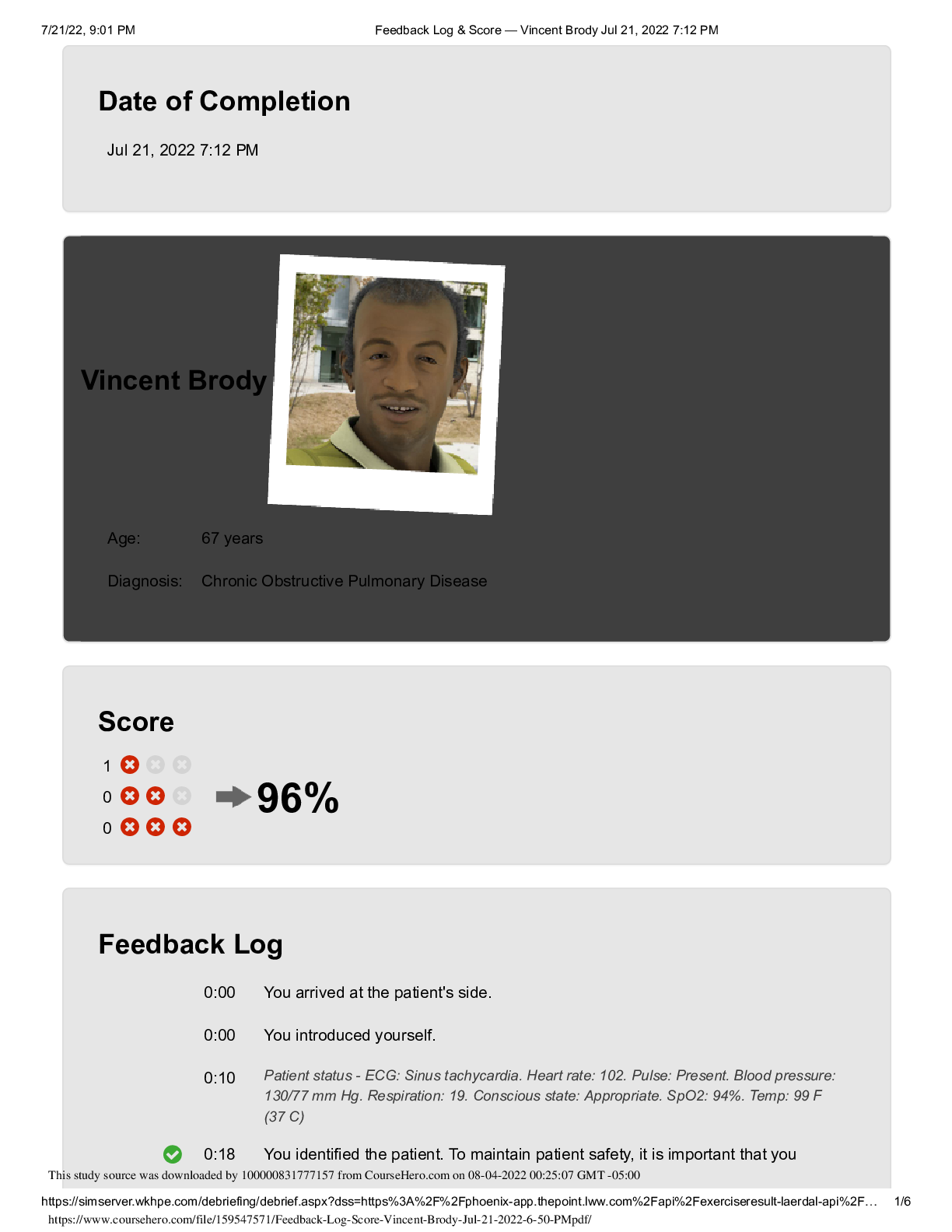
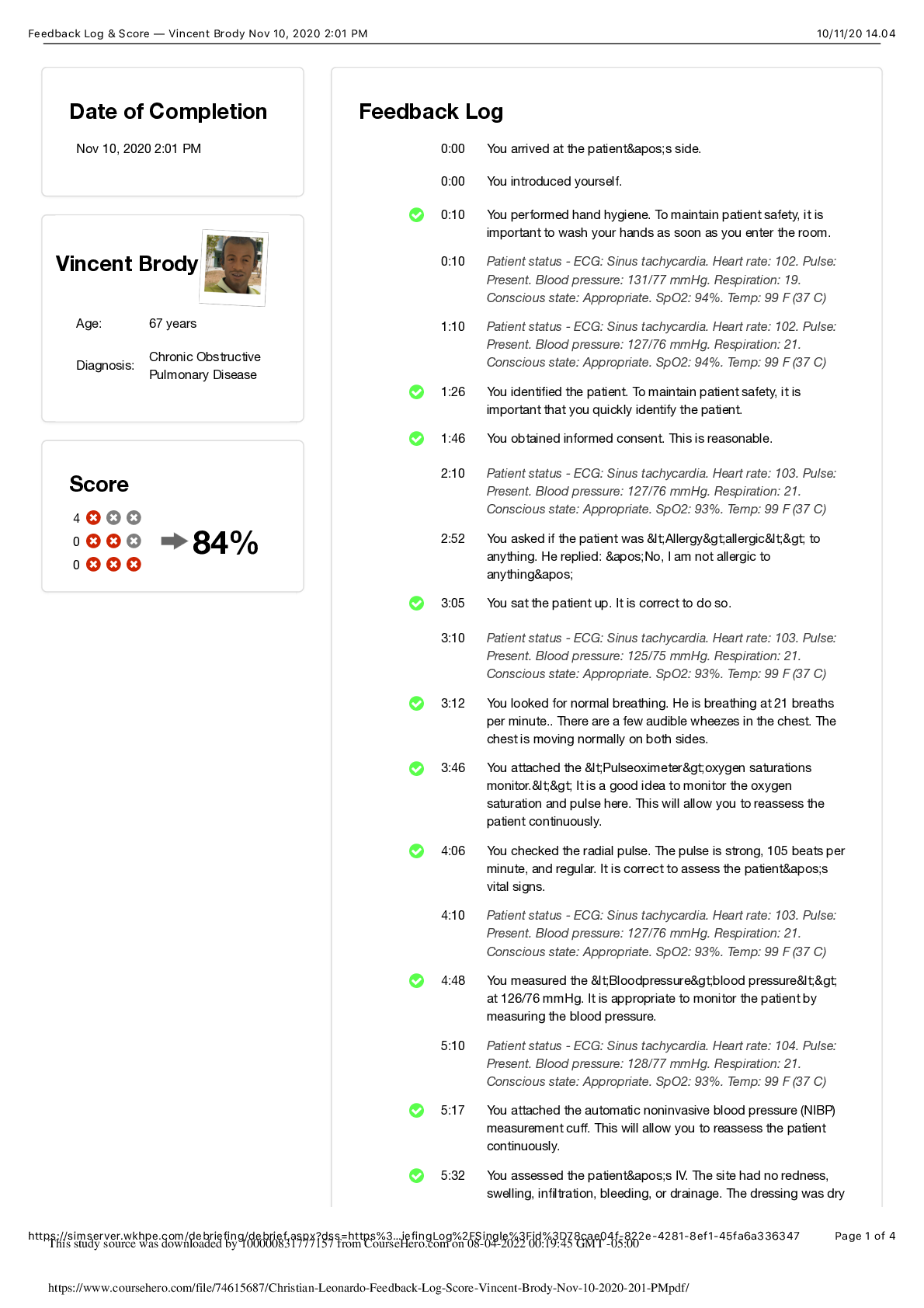
 (1).png)
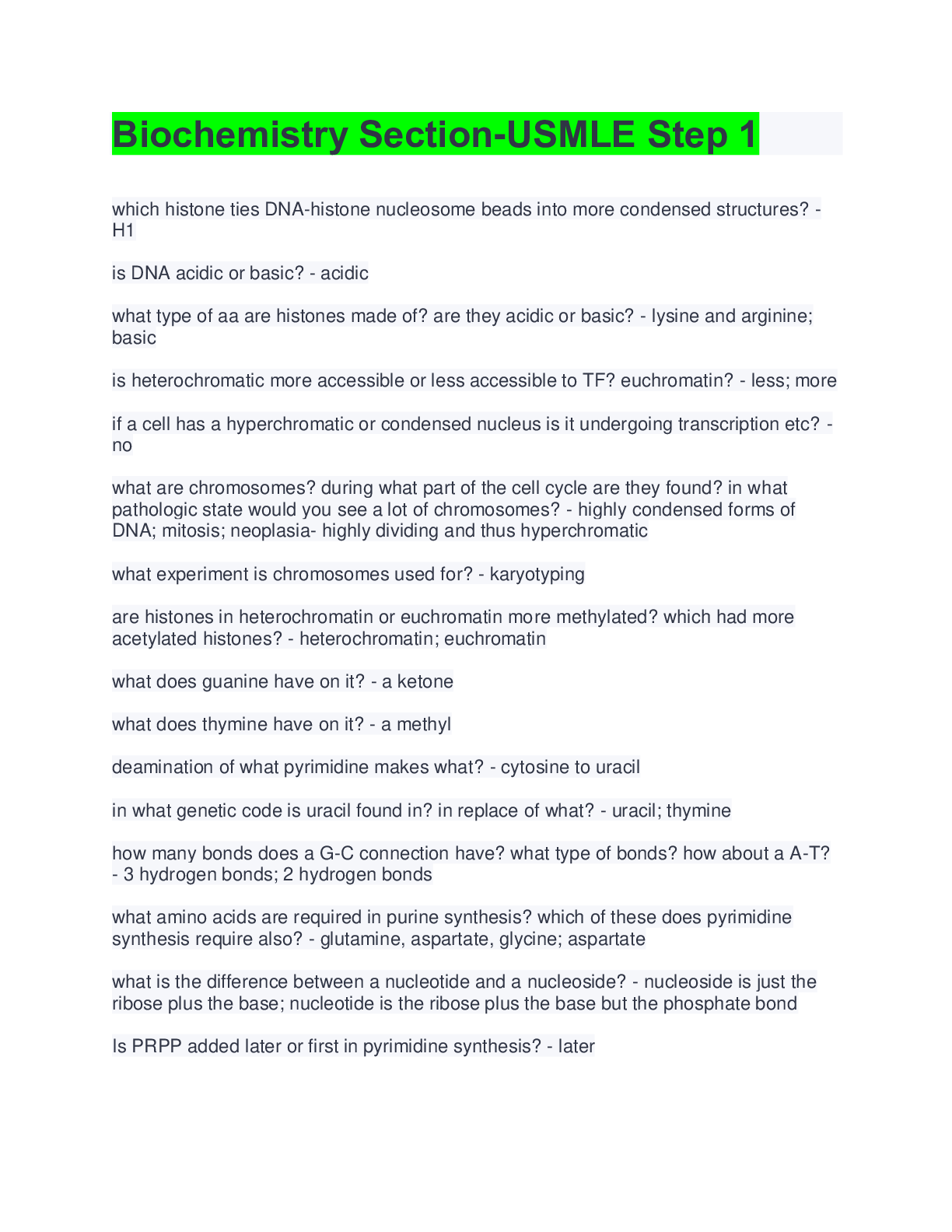
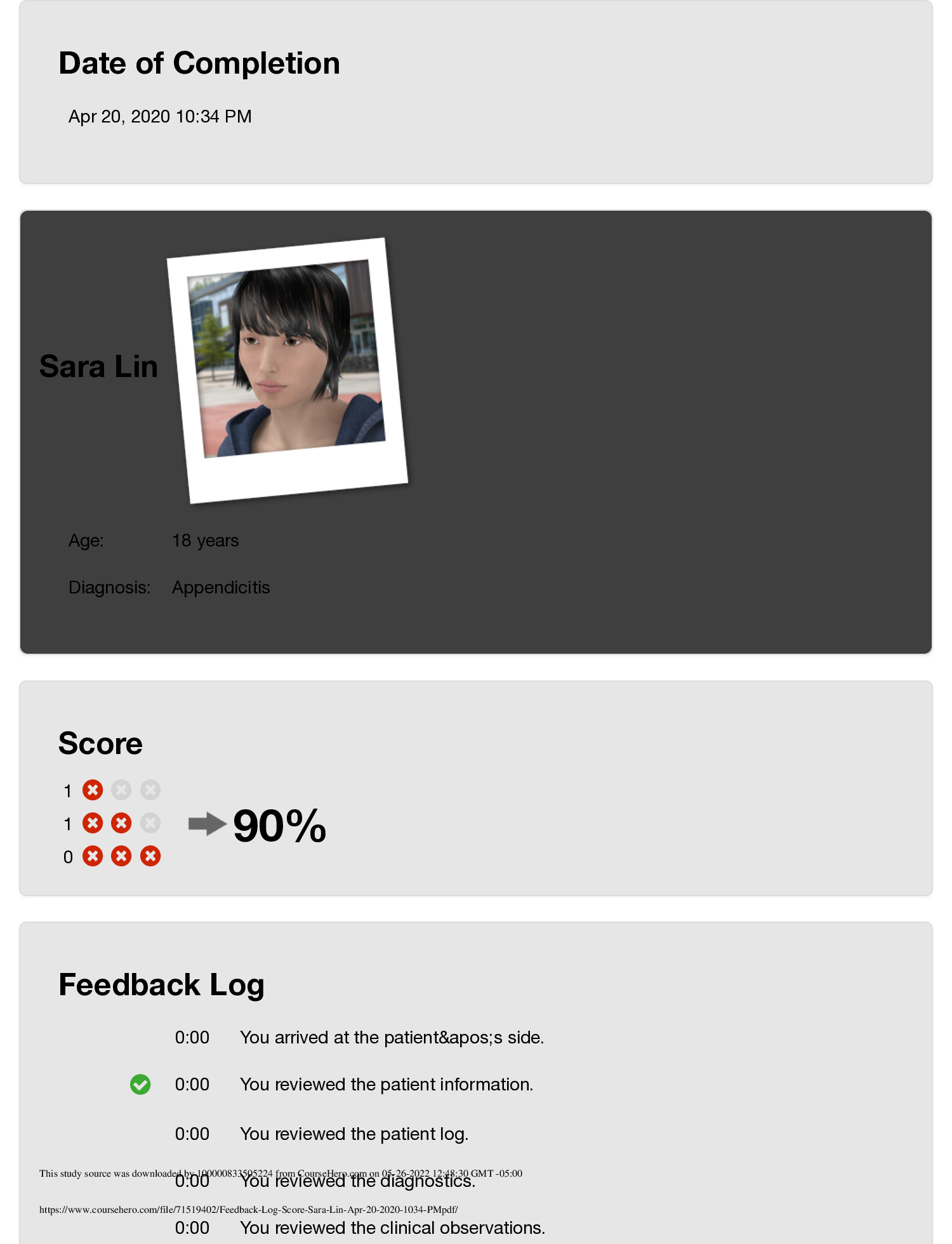
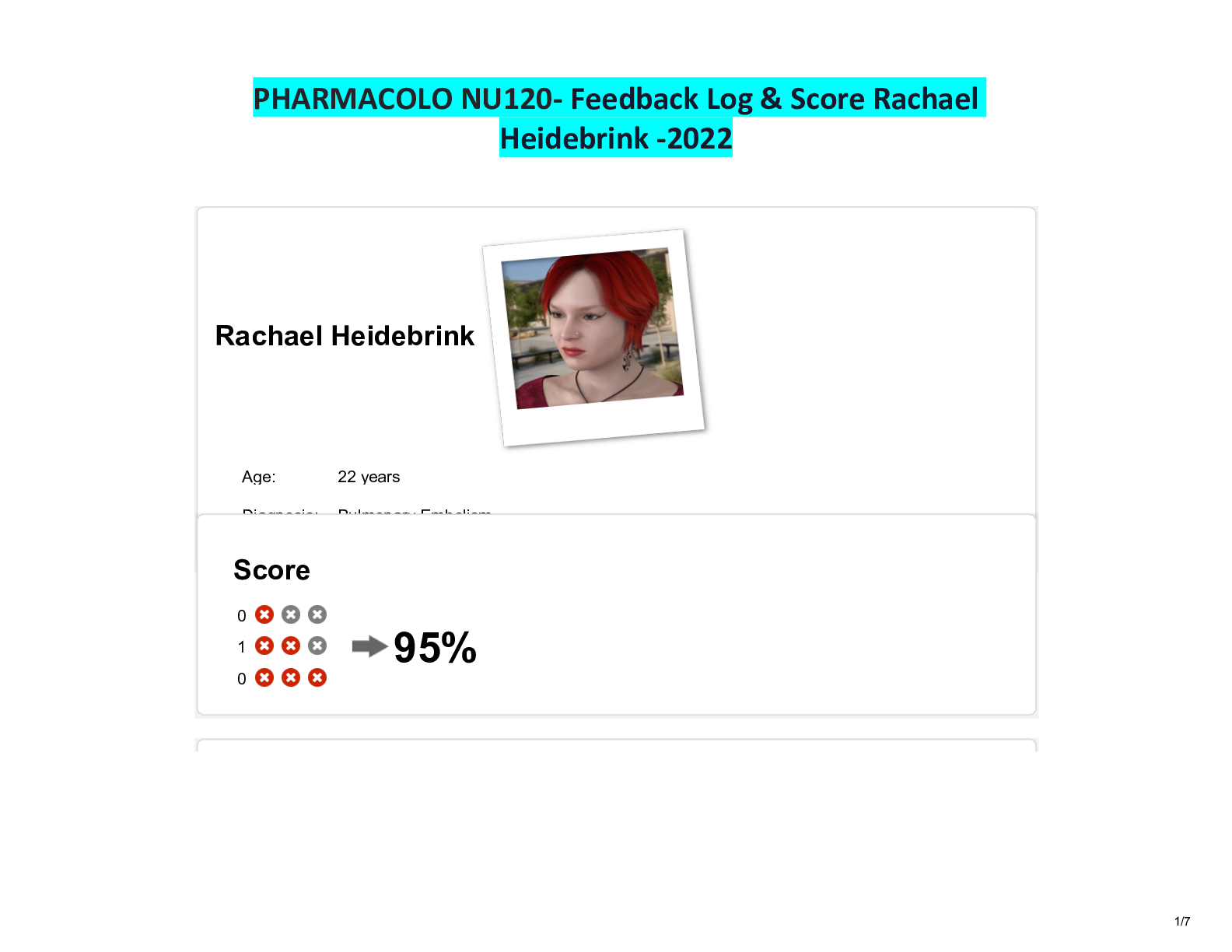
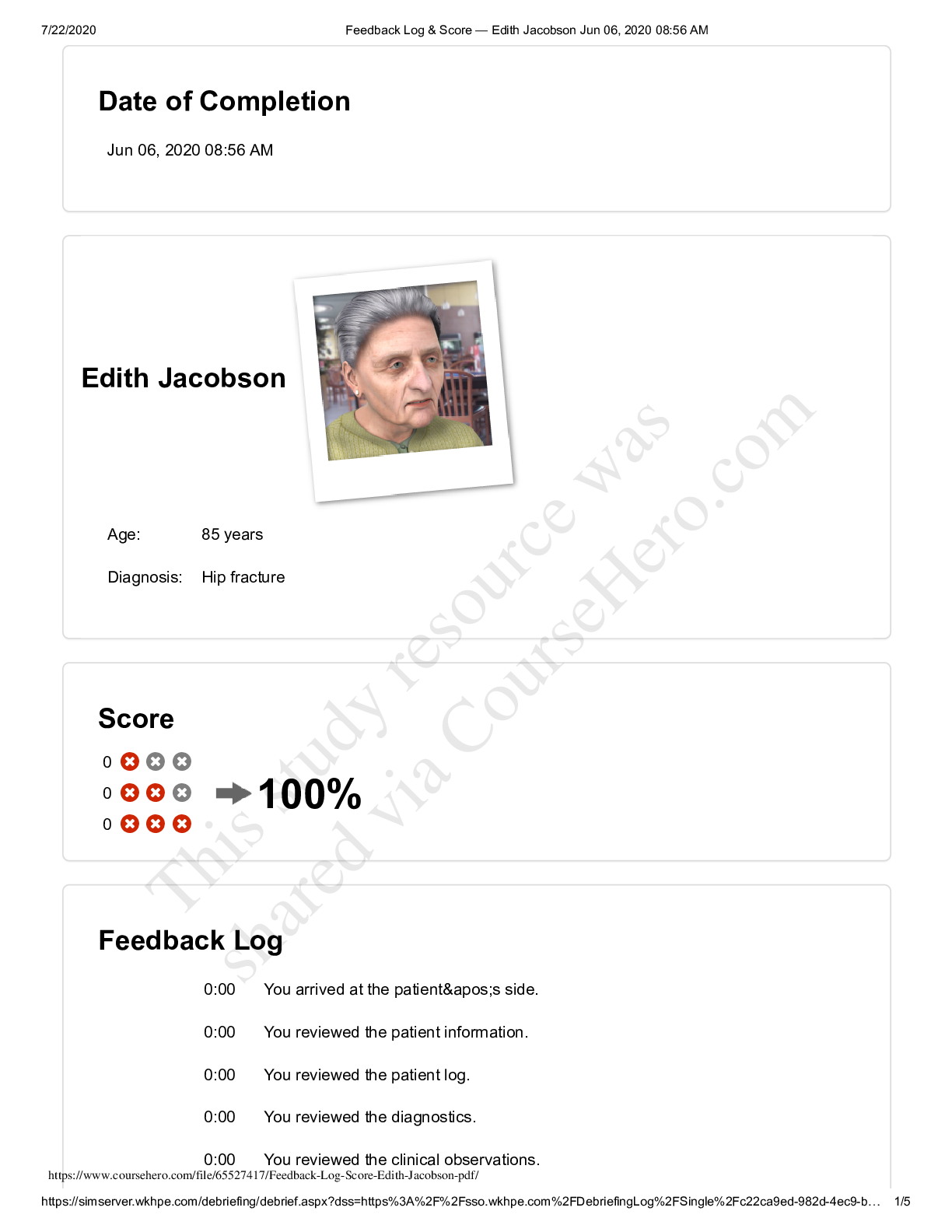
.png)
